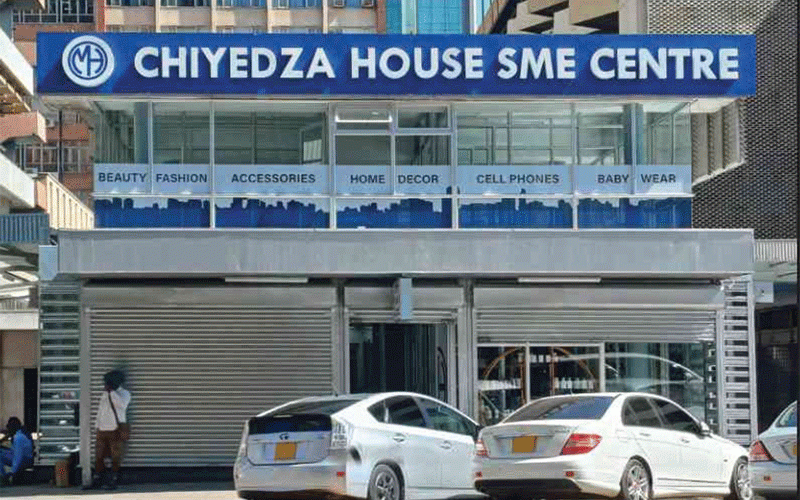
AT last month’s Chamber of Mines of Zimbabwe (CoMZ) annual conference, a critical funding gap came to light: the gold industry requires at least US$1 billion in capital investment to achieve the government’s annual production target of 100 tonnes. This staggering figure underscores the significant challenges hindering the mining sector’s growth and its ability to unlock its full potential. Our business reporter Ashton Ndakusiya (AN) sat down with CoMZ chief executive officer Isaac Kwesu (IK) to delve into the key obstacles facing the industry — from financing constraints to operational hurdles. Below are the highlights of their discussion:
AN: What collaborative strategies are being pursued between the chamber and the government to ensure stable and affordable electricity supply for the mining sector?
IK: Chamber of Mines engagements with power utility Zesa, and the government culminated in mining companies being prioritised for available power. Despite the fragile power supply situation in the country, the electricity supply situation for the mining industry was relatively stable in the first five months of the year, with outages restricted to infrastructure faults.
The chamber has also partnered with alternative power supply providers, including the Intensive Energy Users Group, that have been supplementing grid power at lower tariffs. Additionally, most mining companies have invested in solar and diesel plants to augment their electricity requirements.
AN: How is the current foreign currency retention policy impacting the sector’s ability to reinvest and maintain operations?
IK: The foreign currency retentions are under disproportionate pressure as suppliers of goods and services, including some government departments and Zesa, are demanding payments exclusively in foreign currency. With most mining companies undertaking expansion projects, while some are spending on beneficiation facilities, the available foreign currency falls far short of the requirements of the mining industry.
As a result, mining companies are optimising their operations to align with the available forex, while some capital projects are being reconsidered in view of the foreign currency shortfalls. Meanwhile, the 30% surrender portion continues to lose value due to disparities between the official and the parallel market exchange rate.
Mining companies receive the surrender portion at the official rate at a time local inputs are priced at a depreciated parallel market rate.
- Mavhunga puts DeMbare into Chibuku quarterfinals
- Bulls to charge into Zimbabwe gold stocks
- Ndiraya concerned as goals dry up
- Letters: How solar power is transforming African farms
Keep Reading
The resulting parallel market premium is akin to an implicit tax on exporters, which impacts negatively on the viability of mining projects.
AN: Have you engaged the government over the issue?
IK: The chamber has been engaging the government with a view to reducing pressure on retention through securing homes for the surrender portion by paying electricity bills and taxes in line with the retention framework, as well as ensuring that mining companies can procure inputs from suppliers at the prevailing official exchange rate.
AN: With high taxation and royalty rates, particularly on platinum, diamonds, and lithium affecting the profitability of mining projects, what reforms does the chamber advocate to create a more investment-friendly fiscal environment?
IK: The chamber continues to advocate for a competitive fiscal framework for the mining industry that is benchmarked to regional and international best practice. Such a tax framework will not only restore the viability of mining projects but also improve the competitiveness of Zimbabwe as a destination for investments into the mining sector. We believe that with further information sharing and engagements with authorities, there is huge scope and opportunity for a review of the current fiscal framework to align it with best practice.
AN: How are infrastructural deficits, such as inadequate road networks and water scarcity, coupled with high operational costs, affecting mining productivity, and what initiatives are underway to address these challenges?
IK: The mining industry has not been spared from the current infrastructure challenges, specifically rail, road, and water provision.
These challenges have generally increased the cost of doing business in the mining sector. Typically, mining companies are bulk material movers that require rail infrastructure.
The absence of a reliable and cheaper rail network has resulted in most mining companies resorting to road, which is very expensive, impacting negatively on the viability of mining projects. Movement of material through roads has also brought significant damage to the road network, with some parts of the country now very difficult to access.
Meanwhile, mining companies are working with the government and communities to promote targeted infrastructure investments in key mining corridors, including the rehabilitation of access roads and improvement of connectivity.
AN: With increasing concerns about environmental degradation due to mining activities, including deforestation and water pollution, what measures are being implemented to promote sustainable mining practices and compliance with environmental regulations?
IK: In response to growing concerns over environmental degradation linked to mining activities such as deforestation and water pollution, the Chamber of Mines has taken proactive steps to promote sustainable mining practices. Most of our member mining houses comply with Environmental Management Agency requirements and submit the Environmental Impact Assessment Compliance documents for approval as well as submitting Environmental Management and Rehabilitation Plans to the Ministry of Mines before embarking on mining projects.
Further, mining companies have voluntarily cooperated in the Responsible Mining Audits that have been undertaken by the Ministry of Mines through providing the required information. The Chamber is also in the process of developing voluntary environmental, social and governance (ESG) Guidelines that will be used as a reporting template for mining companies in the country.
The framework will incorporate economic, environmental, and social components, with recommendations for mandatory ESG reporting and minimum disclosure standards for its members. These initiatives mark a significant step toward institutionalising and self-regulating responsible and sustainable mining in Zimbabwe.
AN: In the context of global shifts towards automation and the use of artificial intelligence in mining, how is the chamber encouraging the adoption of advanced technologies to enhance efficiency and competitiveness in Zimbabwe's mining sector?
IK: The chamber recognises the transformative potential of automation and artificial intelligence (AI) in enhancing efficiency, safety, and competitiveness in the mining sector. In response to global technological shifts, the chamber is actively promoting the adoption of advanced mining technologies through knowledge-sharing platforms, such as Annual Mining Conference and Suppliers forum. The chamber is also engaging stakeholders to support investment in digital infrastructure and innovation while advocating for policies that incentivise research, skills development, and technology transfer.
These efforts aim to position Zimbabwe’s mining industry to harness the benefits of Industry 4.0, drive productivity, and remain competitive in a rapidly evolving global mining landscape.
AN: How is the chamber supporting initiatives for value addition within Zimbabwe, and what challenges are companies facing in establishing local processing facilities?
IK: The Chamber of Mines fully supports the government thrust of maximising the contribution of the mining sector to the economy through increased beneficiation of the country’s mineral resources.
In this regard, the mining industry, specifically the PGMs sector, achieved key beneficiation milestones over the past year.
In line with the agreed PGMs beneficiation roadmap between PGMs producers and the government that sets out matte as the minimum beneficiation level, the PGMs industry has now invested in adequate smelting capacity that can accommodate in-country processing of all current and future concentrates.
Having achieved this key milestone, producers are now working together with the government to address other critical enablers, including the provision of an adequate power supply to ensure the smooth running of the smelters.
Meanwhile, the lithium industry has also achieved a lot of progress, and the chamber successfully engaged the government and agreed on a beneficiation roadmap for the lithium industry that will result in the production of lithium sulphate. Already key lithium producers have recorded significant progress in setting up the lithium sulphate plants in line with agreed timelines of two years.











